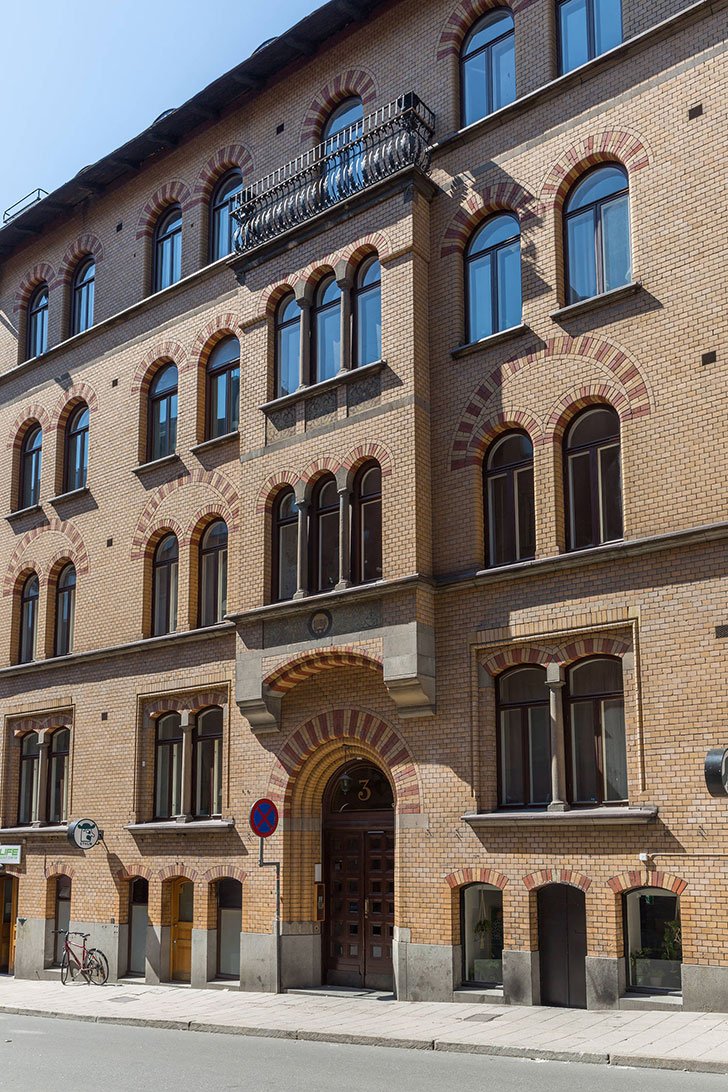#10197. Elegant Neo-Romanesque Brick Facade with Polychrome Masonry

This is a magnificent example of a historical building with Neo-Romanesque elements typical of the late 19th - early 20th century. The facade is made of light-colored brick with expressive decorative arched elements in contrasting red brick, creating an exquisite two-tone pattern.
The architectural composition of the facade is built on a rhythmic alternation of window openings framed by arched elements. Particularly expressive are the semicircular arches above the windows, executed in a two-color brickwork technique. This technique, known as polychrome masonry, adds visual complexity and textural richness to the building.
The central entrance is accentuated by a massive semicircular arch with decorative framing, creating a sense of solidity and monumentality. On the upper floor, a small wrought iron balcony stands out, adding elegance to the building and serving as a functional element.
The building's plinth is made of darker material, likely natural stone, creating a visual foundation and emphasizing the building's tectonics. The window openings decrease in size on the upper floors, which corresponds to the classical principles of facade composition.
For modern house construction, one could borrow the technique of contrasting masonry to accentuate architectural elements, the rhythmic arrangement of windows, and the use of arched motifs to give a building individual character. Even in low-rise construction, such elements can be adapted on a smaller scale to create an aesthetically pleasing facade with historical references.